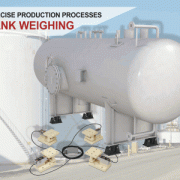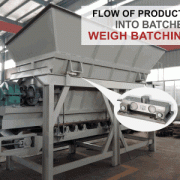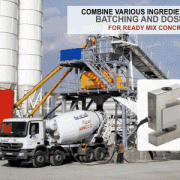PRODUCT OVERVIEW
With rising steel prices, customers sometimes prefer the more economical concrete platform weighbridges. Apart from low costs, they offer high strength and maintenance-free solution that does not require annual painting. It has a longer life when compared to the typical steel platform. Due to the advantages of concrete platforms, the developed world has been using them for over 30 years. Modern-day transportation is moving towards using longer trucks and trailers. The concrete platform weighbridge can bear heavier loads.
AVAILABLE TYPES: SURFACE MOUNT WEIGHBRIDGE | PIT MOUNT WEIGHBRIDGE
ADVANTAGES OF CONCRETE WEIGHBRIDGES
- Cost: The material required to construct the concrete platform is approximately 40% less than steel.
- Maintenance: A concrete structure is robust, rust-free, and maintenance-free. In steel structures, nuts, and bolts require tightening and could rust, which is not true in concrete weighbridges.
- Design: In a concrete weighbridge, load cells have no lateral pull as the concrete platform is a rigid monolithic structure, and the load transfers vertically. The load gets distributed to all load cells when the vehicle comes over the platform.
- Strength: Concrete platforms are heavy and have more mass and stability. Hence, no inverse forces due to the cantilever effect can occur at the platform’s ends.
- Life: Concrete platforms have a long life, and no bending effect can occur.
- Transportation: Concrete platforms are constructed on-site, eliminating transportation costs.
Capacity: 20Ton | 40 Ton | 60 Ton | 80 Ton | 100 Ton | 120 Ton | 150 Ton | 200 Ton | 250 Ton
Standard Sizes: 6-meter x 3 meter | 12-meter x 3 meter | 18-meter x 3 meter | 24-meter x 3 meter
RELIABLE STANDARD WEIGHBRIDGE CAPACITIES – COVER ALMOST ALL INDUSTRIAL AND COMMERCIAL REQUIREMENTS.
WE SUPPLY ALL STANDARD-SIZE WEIGHBRIDGES AND ALSO CUSTOMIZED WEIGHBRIDGES ACCORDING TO CUSTOMER’S REQUIREMENTS, WHICH MAKES OUR PRODUCTS AND SERVICES VERSATILE IN THE COMPETITIVE MARKET.




